
Comparing Fuel and Maintenance Costs of
Electric and Gas Powered Vehicles in
Canada
Ryan Logtenberg
James Pawley
Barry Saxifrage
September 2018

Contents
3 Executive Summary
4 ----- Map: Annual savings in fuel and maintenance of BEVs compared to ICEVs by
province
5 Introduction
6 Methods
7 ----- Choosing vehicles to compare
8 ----- Average Driving Distances of Households in Canada
10 ----- Fuel/Energy Costs
10 ---------- Gasoline Prices
10 ---------- Residential Electricity Prices
10 ---------- ICEV and BEV Fuel Costs by Province
11 Vehicle Maintenance Costs
12 Comparing Total Fuel and Maintenance Costs
15 Discussion
16 Conclusion
17 Recommendations
18 Appendix
Tables
8 Table 1: Purchase prices of vehicles used in this study
9 Table 2: Calculating distance driven per household in Canada
13 Table 3: Annual savings on fuel and maintenance of driving BEVs per household
13 Table 4: 10 year savings on fuel and maintenance of driving BEVs per household
18 Table 5: Average regular unleaded gasoline prices by province
18 Table 6: Average provincial electricity rates
19 Table 7: Average fuel economy of vehicles
19 Table 8: Average vehicle fuel and maintenance costs per km by province
19 Table 9: Percent savings on fuel costs by operating a BEV over an ICEV
20 Table 10: Lifetime costs of fuel & maintenance of the Kia Soul & VW Golf
20 Table 11: Lifetime costs of fuel & maintenance of the Kia Soul
21 Table 12: Lifetime costs of fuel & maintenance of the Volkswagen Golf
1

Figures
4 Figure 1: Annual Savings in Fuel and Maintenance of BEVs Compared to an ICEVs
by Province
4 Figure 2: 10 year savings of driving BEVs per household
6 Figure 3: Where the energy goes
8 Figure 4: Vehicle models used in this study
9 Figure 5: Average annual distance driven per household
11 Figure 6: Average annual fuel costs per household
12 Figure 7: Averaged annual vehicle maintenance costs per household
14 Figure 8: Average 10 year fuel & maintenance costs of ICEVs and BEVs per household
15 Figure 9: Lifetime Savings in Fuel and Maintenance of the VW Golf EV & Kia Soul
18 Figure 10: Average regular unleaded gasoline prices by province
18 Figure 11: Average provincial electricity rates
2

Executive Summary
Despite being available to Canadians since 2011, battery
electric vehicles (BEV) are still a rare sight on Canadian
roads. In May 2018, electric vehicles made up just 2% of
total vehicle sales.
One of the perceived barriers to a higher adoption rate is
the initial purchase price of an electric vehicle. Is a BEV
worth this higher price compared to an internal combustion
engine vehicle (ICEV)?
This report does not address the other benefits of owning a
BEV such as the improved ride experience, reduced
greenhouse gas emissions and air pollution or the
reduction in time wasted arranging vehicle service
appointments and visits to the gas station. We only analyse
out of pocket costs. To do this we use a model that
compares the annual costs of fuel and maintenance of
domestic ICEV and BEV vehicles for each province in Canada.
This report puts numbers on these savings by factoring in
provincial averages for the price of gasoline (GasBuddy,
August 2018), electricity rates (summarized by Hydro
Quebec, 2017), vehicle maintenance costs (Vincentric, 2018)
and the average distance travelled per household (Natural
Resources Canada, 2008). We compare two similar cars that
are available in both ICE and battery electric versions.
Assuming a 250,000 km service life over 10 years, the results
are displayed in the map below.
3
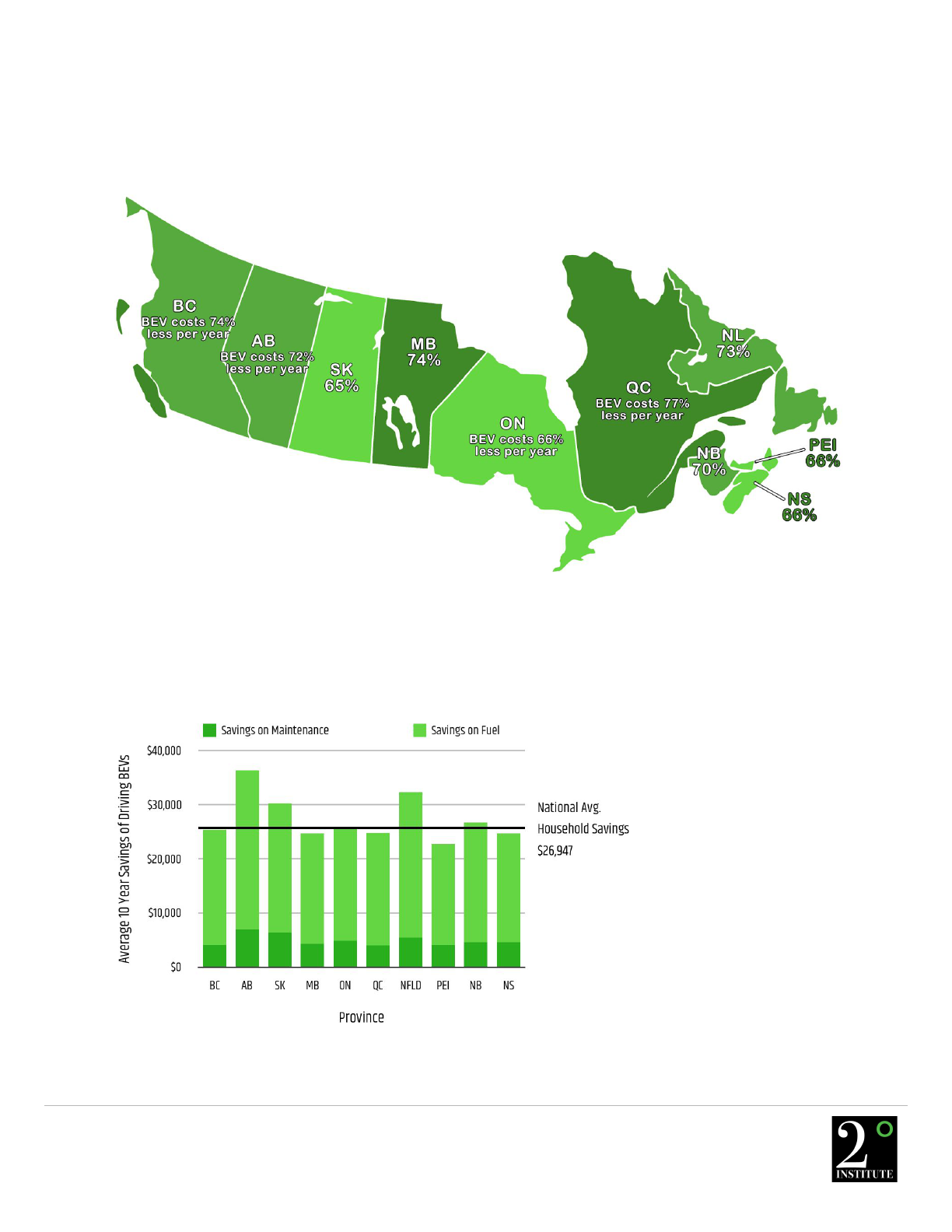
Figure 1: Annual Savings in Fuel and Maintenance of BEVs
Compared to ICEVs by Province
Figure 1: This map displays the annual percentage savings in fuel and maintenance of a battery electric vehicle (BEV) over
the same type of vehicle with an internal combustion engine for each province in Canada.
Figure 2: 10 year savings of driving BEVs per household
Figure 2: This chart shows the
average savings per household
in fuel and maintenance that
will accrue from operating BEVs
over comparable ICEVs for each
province in Canada for 10 years..
We assume an annual inflation
rate of 2% for all costs. The
average household in Canada
has 1.5 vehicles.
4

Introduction
An important step in transitioning away from non-renewable carbon fuels such as diesel and gasoline
is to power the transportation sector with renewable electricity.
In 2008, electric cars re-entered the North American scene with a bang when TESLA introduced a model
that was both fast and sexy. Sadly TESLA’s price tag meant that, until recently, most of us could only
watch the show. The introduction of the Nissan Leaf in 2011 provided the first of what is now a large
and growing number of practical BEVs available at prices only slightly higher than their ICE
counterparts. As a result, an increasing number of car buyers have begun to wonder if an electric car
might be the best answer for their mobility needs.
Like the LED light bulb, electrified transportation offers a drastic improvement in energy efficiency
over older technologies (ICEVs). Depending on the ratio of city to highway driving, between 77% to 82%
percent of the energy used to power an electric car is used to move it down the road. By contrast,
ICEV’s convert only 16% to 25% percent of the energy in the fuel into motive power (Thomas, J. 2014,
Baglione, M. et al, 2007, Bandivadekar, A. et al, 2008, Carlson, R. et al 2016).
The first roadblock to widespread adoption was the limited range of early mid-priced BEVs but this has
become less of a problem since the $45,000 Chevy Bolt broke the 200 mile or 320km/charge barrier
with a range of 383km/charge. As battery technology continues to improve and fast-charge rates
continue to increase, range anxiety seems likely to recede into the background, especially as BEVs
have the clear advantage that, unlike ICEVs, they can be “fueled” at home.
The second roadblock was cost: BEVs still cost a few thousand dollars more than ICE cars having
roughly similar capabilities. On the other hand, BEV running costs such as electric “fuel” and routine
maintenance are significantly lower. Typical BEV drivetrains have 90% fewer moving parts, require no
maintenance such as oil changes or timing belts and their ability to use regenerative braking saves
energy and makes their brake pads last longer (US Department of Energy). When looking at the top 10
most common car repair items, none of the repairs in the list apply to a BEV. Over time, such savings
more than compensate for BEVs higher purchase price.
5
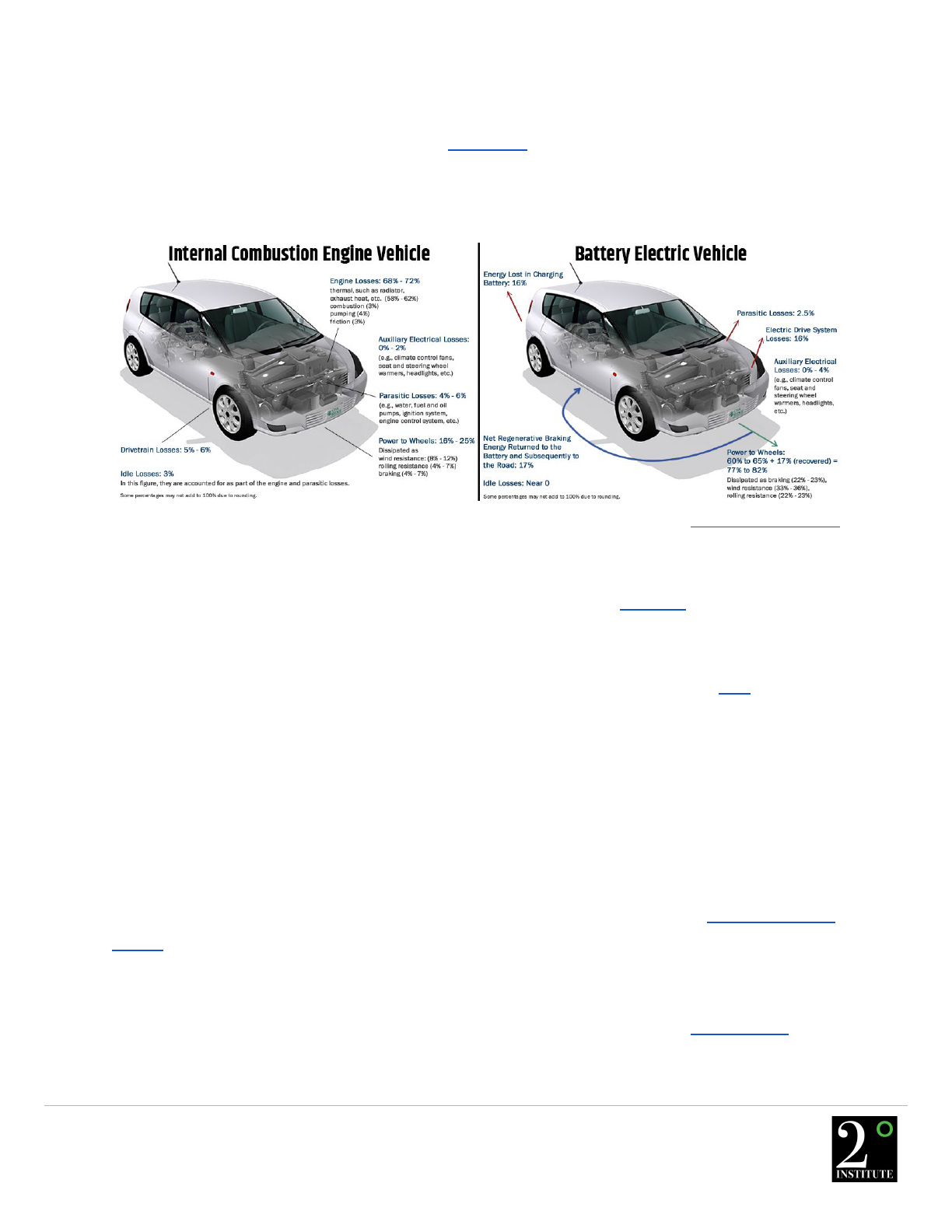
This report examines potential savings at a household level rather than at a vehicle level because in
multi-vehicle households, a single BEV has the potential to perform the bulk of the driving needs and
therefore maximize savings for the household (Tamor et al. 2015).
Figure 3: Where the energy goes (combined city/highway values).
Source: US Department of Energy
In a 2018 survey conducted by BC Hydro, 55% of respondents identified saving money on fuel and
maintenance as their biggest motivation for buying an electric vehicle (BC Hydro, 2018).
This report will look at out-of-pocket operational costs for ICEVs and comparable BEVs in Canada.
Although similar comparisons have been done in the past for the US by Palmer et. al. (2018), we believe
that there is a need for a Canada-specific comparison. This study utilizes public data on the energy and
service costs in each province of Canada to determine the relative operating costs of ICEVs vs. BEVs
assuming that each vehicle is operated for 10 years.
Methods
Comparison studies of this type face a number of practical problems. While fairly reliable estimates
are available of the average annual distance driven by family cars in each province (Natural Resources
Canada, 2008), it is less clear which exact ICEV and BEV models should be chosen for the comparison or
how one should determine the servicing costs of a novel device like a BEV.
Although the average residential electricity rates are available for each province (Hydro Quebec, 2017),
it is not always clear how these averages were calculated. We know that rates may vary substantially
6

with location and even time of day but we don’t know when or where people will recharge their BEVs.
Beyond this, several utilities provide a minimal residential service at a low rate and then charge more
per kWh for usage above this threshold. Published average residential rates presumably represent a
mixture of these two rates, but if we assume that car-charging will occur in addition to normal
domestic use, unless these rules are changed, it seems likely that the owner of a BEV may have to pay
somewhat more than the published "average” rate to charge his/her car.
Trying to determine the energy costs of running a BEV over a 10-year period raises additional questions
related to the average number of kilometers driven and the rate at which electricity rates and
gasoline prices will increase over the next decade. Will recent massive reductions in the cost of
installing PV-solar arrays and large wind turbines cause rates to fall? Or will they rise because of the
increased power usage related not only to the electrification of our road and rail transport but also to
the need to replace the energy used to heat our homes and businesses when burning fossil-fuels is
curtailed to control climate change?
Service costs are another source of uncertainty. Electric powertrains require virtually no routine
maintenance, however, we do not yet have enough experience to know the average life of present
battery packs. Early data from TESLA vehicle owners shows that after an initial 5% drop in capacity over
the first 40,000 km, most batteries didn’t drop below 90% of their original capacity until after 250,000
km. Although this is close to the distance travelled by the average Canadian car in 10 years, it is not
clear that the 10-year service costs for a BEV should include the cost of replacing a battery today. First
of all, improvements in battery design and operation seem likely to make newer batteries last longer.
In addition, a modern car with a 90% battery capacity still has a significant range. Finally, it seems very
likely that over the next decade, an industry will spring up to refurbish and replace such batteries for
much less cost than the present cost of a new battery. Indeed, a factory for this exact purpose has
already opened in Japan.
Despite these uncertainties, we believe that current data will still allow us to make an accurate
estimate of the relative operating costs of ICEVs versus BEVs.
Choosing Vehicles to Compare
To confront the plethora of model choices, we have confined our study to two models from two
manufacturers: one from Asia and one from Europe. These cars are widely available in North America
7
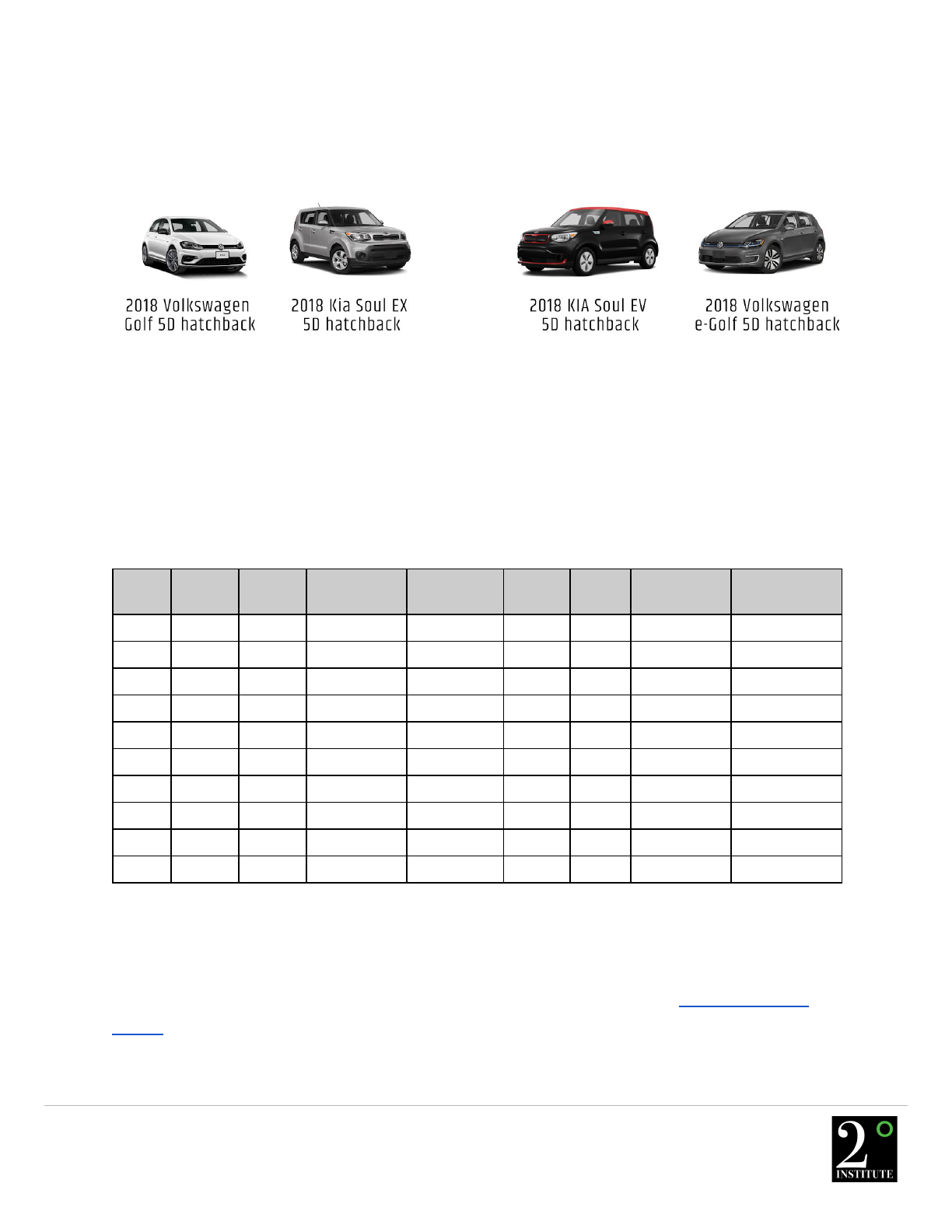
but are unusual in that they can be purchased with either an ICE or a BEV powertrain. They are the
Volkswagen Golf and Golf EV and the Kia Soul and Soul EV.
Figure 4: Vehicle models used in this study.
All four models represent fairly plausible family cars: not the fastest or the longest range, but with an
average fuel economy and enough features to fulfil the transport needs of most urban families. The
2018 list prices of these cars, including the rebates currently available in each province, are shown in
Table 1. For both the Kia Soul and Volkswagen Golf, vehicle model features were compared and priced
to represent the closest match between the BEV and ICEV versions.
Table 1: Purchase prices of vehicles used in this study.
Province
Kia Soul
ICEV
Kia Soul
BEV
Kia Soul BEV
(after rebate)
$ difference
after rebate
VW Golf
ICEV
VW Golf
BEV
VW Golf BEV
(after rebate)
$ difference after
rebate
BC
$24,930
$37,780
$32,780-$26,780*
$7,850-$1,850*
$28,495
$36,355
$31,355-$25,355*
$2,860-($3,140)*
AB
$24,952
$37,802
$37,802
$12,850
$28,495
$36,355
$36,355
$7,860
SK
$24,930
$37,780
$37,780
$12,850
$28,495
$36,355
$36,355
$7,860
MB
$24,930
$37,780
$37,780
$12,850
$28,495
$36,355
$36,355
$7,860
ON
$24,969
$37,819
$37,819
$12,850
$28,495
$36,355
$36,355
$7,860
QC
$24,945
$37,795
$29,795
$4,850
$28,495
$36,355
$28,355
$(140)
NFL
$24,930
$37,780
$37,780
$12,850
$28,495
$36,355
$36,355
$7,860
PEI
$24,930
$37,780
$37,780
$12,850
$28,495
$36,355
$36,355
$7,860
NB
$24,930
$37,780
$37,780
$12,850
$28,495
$36,355
$36,355
$7,860
NS
$24,930
$37,780
$37,780
$12,850
$28,495
$36,355
$36,355
$7,860
*Lower value reflects participation in the BC Scrap-it program which offers $6,000 trade in towards a new BEV.
Average Driving Distances of Households in Canada
We determined annual average driving mileage per household using data from Natural Resources
Canada on miles/vehicle and number of vehicles/household for all provinces. The national average
numbers in the table below are population-weighted.
8
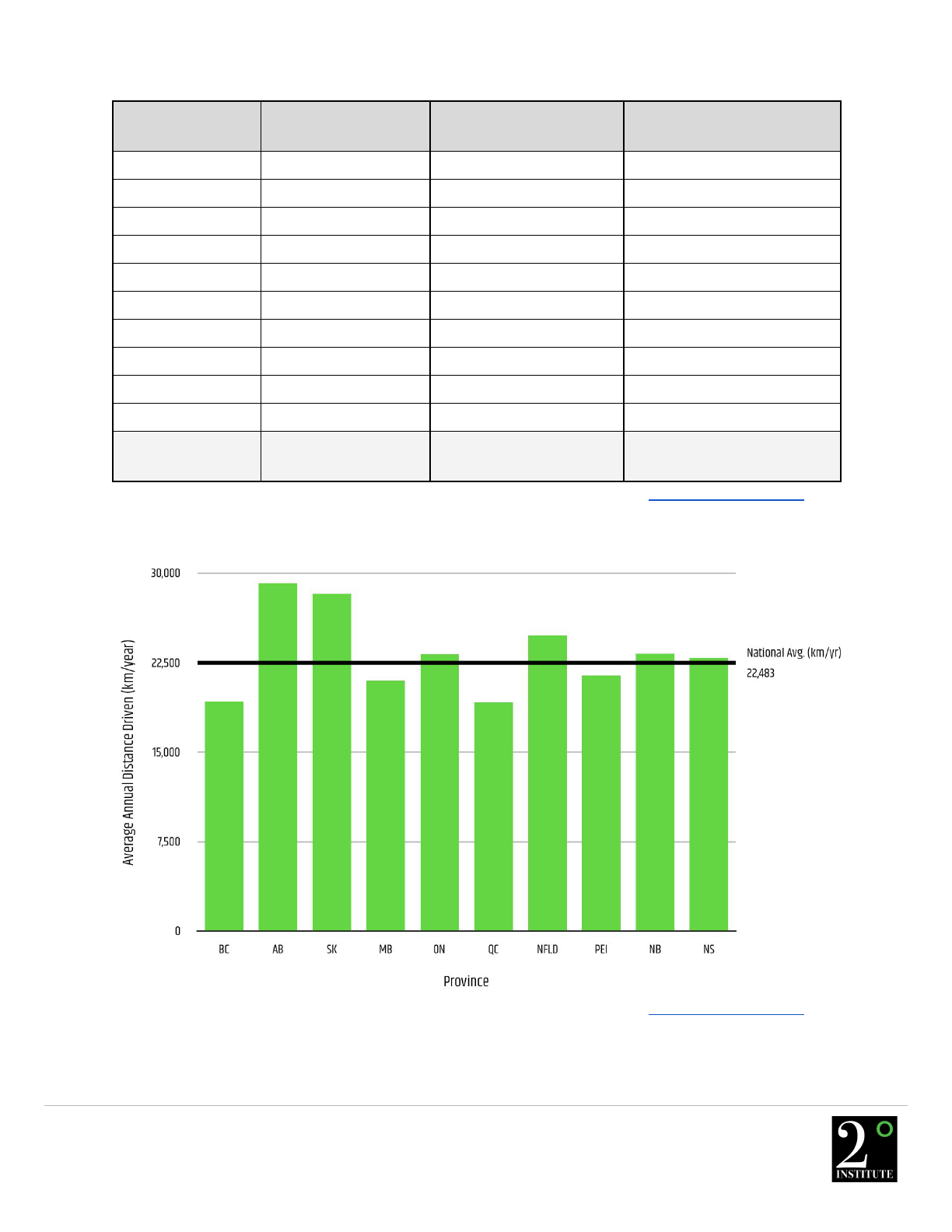
Table 2: Calculating total distance driven per household in Canada.
Province
Average. distance driven
per vehicle (km)
Average number of vehicles
per household
Total distance driven per
household (km)
British Columbia
13,100
1.47
19,257
Alberta
15,600
1.87
29,172
Saskatchewan
15,800
1.79
28,282
Manitoba
14,800
1.42
21,016
Ontario
16,000
1.45
23,200
Quebec
14,300
1.34
19,162
Newfoundland
18,100
1.37
24,797
PEI
15,300
1.4
21,420
New Brunswick
15,200
1.53
23,256
Nova Scotia
16,600
1.38
22,908
Population-weighted
national average
15,151
1.48
22,483
Source: Natural Resources Canada, 2008
Figure 5: Average annual distance driven per household.
Source: Natural Resources Canada, 2008
9

Fuel/Energy Costs
Gasoline Prices
Gasoline prices were obtained from Gasbuddy. Gasbuddy uses crowd-sourced data submitted by
thousands of volunteers to calculate near real-time gas prices from thousands of service stations
across Canada. They are the data provider for many organizations including the Canadian Automobile
Association. From these data, Gasbuddy compiles daily and monthly averages for regular gasoline
prices (see: Table 5 in the Appendix).
Although the period chosen may indeed represent a spike in gas prices, news that fracked oil wells in
the US continue to underperform over time, the continued confusion in the Middle East, while demand
in Asia continues to rise, gives us some confidence in this choice. In addition, the Government of
Canada has passed legislation mandating that some form of carbon tax will be implemented
nationally by January 1st 2019. They have further specified that this tax will increase over the next
decade. A $30/ton-carbon tax translates into a $3.5/barrel increase in the price of crude and
represents a 5% increase in the cost of oil selling at $60/barrel. Given all these factors, we have
inflated the price of gasoline at what we believe is a conservative rate of 2% a year.
Residential Electricity Prices
The residential electricity rates for each province have been obtained from a 2017 study by Hydro
Quebec on average household electricity rates for major Canadian cities (Comparison of Electricity
Prices in Major North American Cities). Since these rates are from 2017, we increased the values by 2%
to estimate 2018 rates. For provinces in which data was provided for 2 or more cities, we
population-weighted the averaged rate for the province (see: Table 6 in the Appendix). We assume
that, in line with recent history, these rates will increase at 2%/year.
ICEV and BEV Fuel Costs by Province
To determine annual gasoline fuel costs, we multiplied the average fuel economy of the Volkswagen
Golf and Kia Soul by the distance driven per household in each province and by the average cost of this
fuel. Fuel economy values were taken from fueleconomy.gov (See Table 7 in Appendix). The 2018
average annual fuel costs per household for each province are shown in Figure 6. On average, the
population weighted savings on fuel costs from operating a BEV is 80% (See Table 9 in Appendix).
10
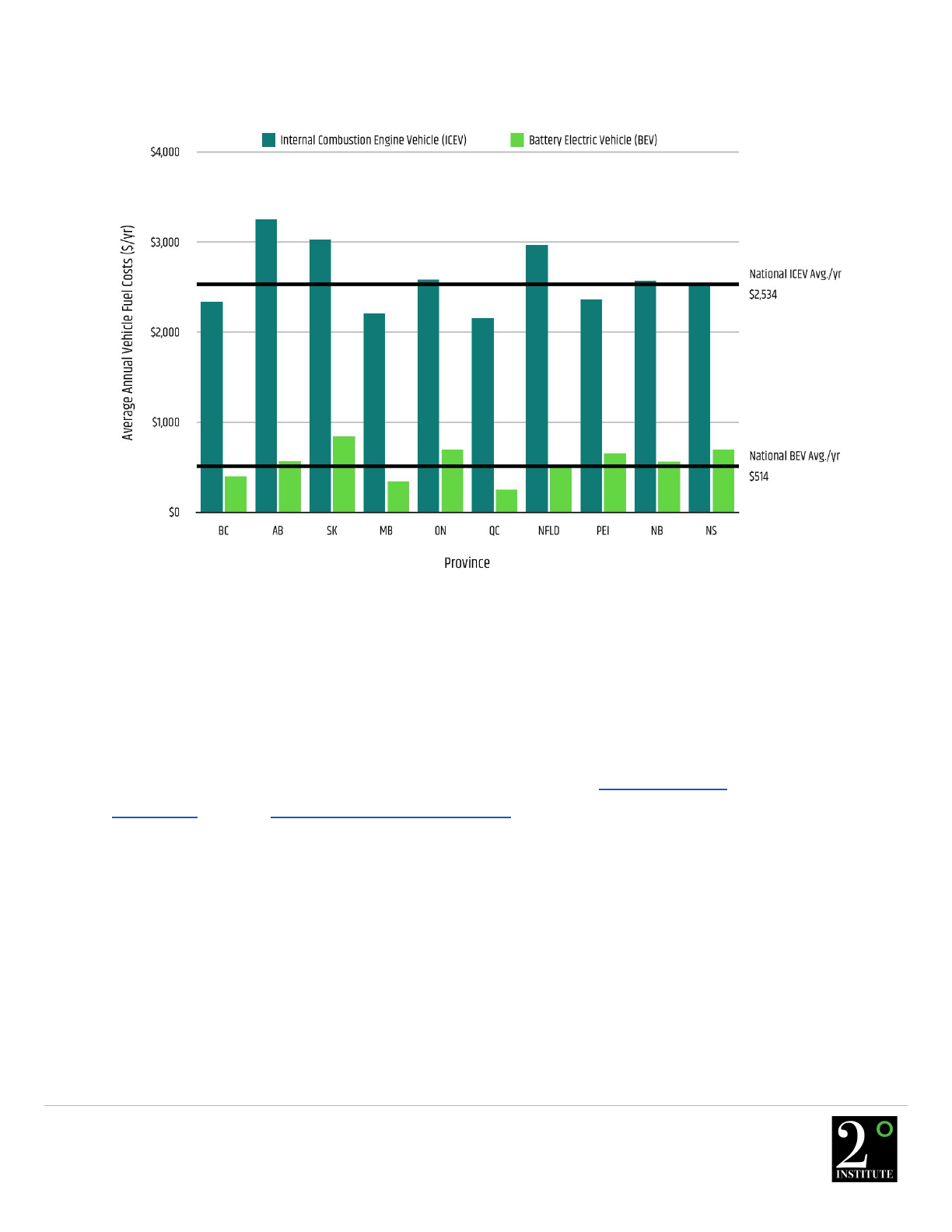
Figure 6: Average annual fuel costs per household.
Vehicle Maintenance Costs
Service numbers for all 4 models were obtained from the data provider Vincentric. They include
estimated costs of tires, brake replacement and the other disposables related to routine maintenance.
Vincentric’s data reveals a 47% average cost savings in maintenance of operating a BEV over an ICEV in
Canada. This is consistent with other scientific papers on this topic (M. Alexander et al. 2013 61%,
Propfe et al. 2012 49%, Institute for Automotive Research, 2012 35%). Although we were unable to audit
all of Vincentric’s maintenance estimates, we believe the savings of operating a BEV could actually be
much higher considering Vincentric originally didn’t account for regenerative braking in hybrid and
electric vehicles when estimating the lifespan of brake pads. Vincentric originally gave an equal
75,000km lifespan for brake pads for both ICEV and BEVs until we brought this inaccuracy to their
attention and they later revised the BEV brake pad lifespan up to a more realistic 215,000km.
The battery is expected to last the life of the vehicle and is therefore not included as a maintenance
cost. We have also left out any monetary recognition of the many hours spent by the owners of ICE
11
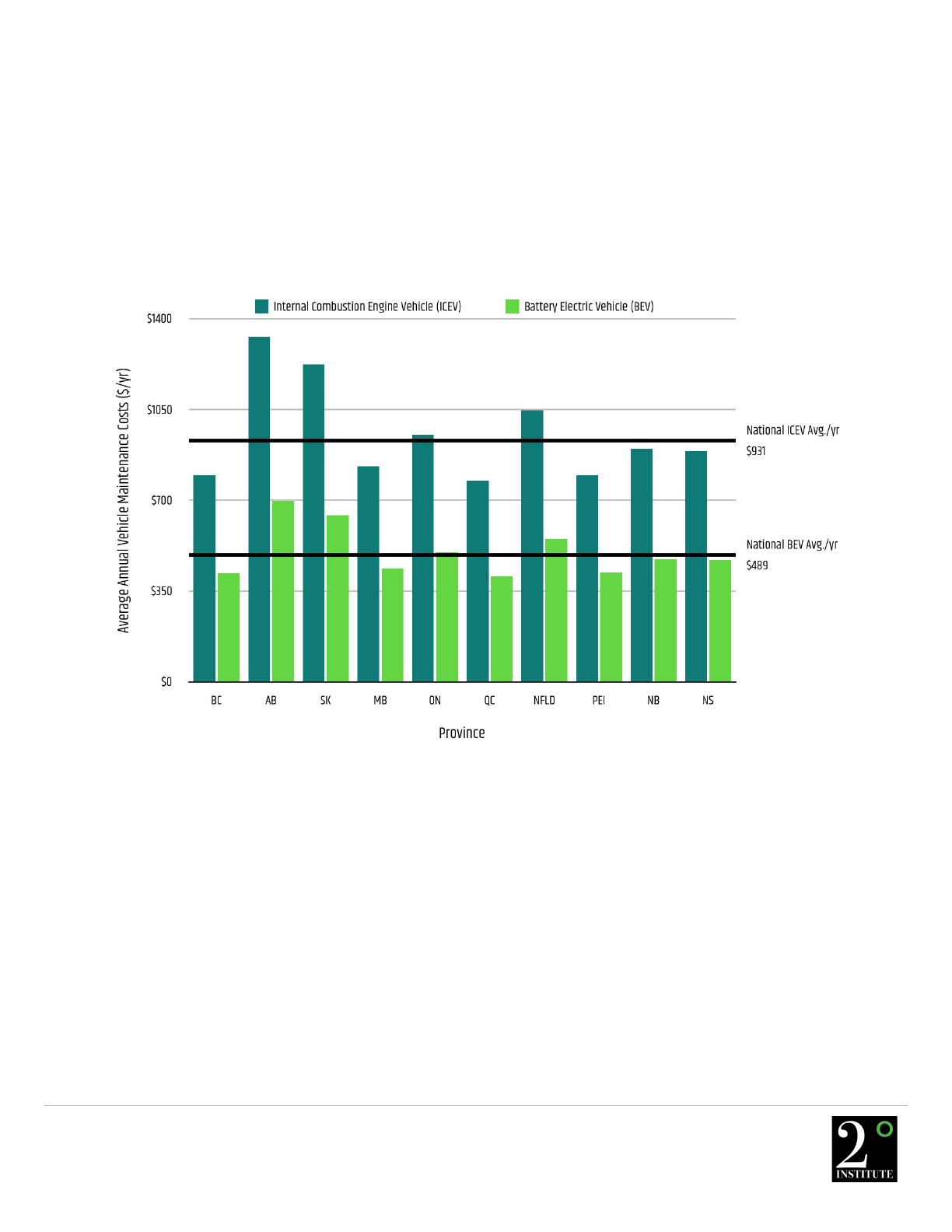
cars in driving to filling stations and arranging for, and implementing their more frequent service
visits.
The graph below illustrates estimated annual maintenance costs for operating ICEVs and BEVs for
each province in Canada (Figure 7). It is based on the average distance driven per household in each
province for the year 2018.
Figure 7: Average annual vehicle maintenance costs per household.
Comparing Total Fuel and Maintenance Costs
For comparing the total costs in fuel and maintenance of the ICEVs and BEVs used in this report, we
added the two costs together for both vehicle types for each province (Table 3). The annual savings of
switching to BEVs range from $2,084/year on PEI to $3,316/year in Alberta. As a percentage, the
average savings for each province ranged from 65% in Saskatchewan to 77% in Quebec with the
national average being 71%.
12

Table 3: Annual savings on fuel and maintenance of driving BEVs per household.
Province
Average ICEV Costs
Average BEV Costs
Savings
Maint.
Fuel
Total
Maint.
Fuel
Total
$
%
British Columbia
$797
$2,339
$3,136
$419
$400
$819
$2,318
74%
Alberta
$1,330
$3,251
$4,581
$698
$567
$1,265
$3,316
72%
Saskatchewan
$1,225
$3,025
$4,250
$643
$841
$1,484
$2,766
65%
Manitoba
$831
$2,207
$3,038
$438
$342
$779
$2,259
74%
Ontario
$952
$2,583
$3,535
$500
$694
$1,194
$2,341
66%
Quebec
$776
$2,157
$2,933
$408
$254
$663
$2,270
77%
Newfoundland
$1,048
$2,970
$4,018
$551
$519
$1,070
$2,948
73%
PEI
$798
$2,363
$3,161
$421
$657
$1,077
$2,084
66%
New Brunswick
$899
$2,574
$3,473
$474
$565
$1,039
$2,434
70%
Nova Scotia
$891
$2,527
$3,418
$469
$694
$1,163
$2,255
66%
Population-weighted
national average
$931
$2,534
$3,464
$489
$514
$1,003
$2,461
71%
In our 10 year forecasts of future savings for each household, we used an annual inflation rate of 2%
for the cost of fuel and maintenance for both vehicle types (Table 4).
Table 4: 10 year savings on fuel and maintenance of driving BEVs per household.
Province
Average ICEV costs
Average BEV costs
10 yr
Savings
Maint.
Fuel
Total
Maint.
Fuel
Total
British Columbia
$8,724
$25,616
34,340
$4,587
$4,376
$8,963
$25,377
Alberta
$14,562
$35,597
50,159
$7,640
$6,211
$13,851
$36,308
Saskatchewan
$13,413
$33,128
46,541
$7,045
$9,206
$16,251
$30,290
Manitoba
$9,102
$24,163
33,264
$4,791
$3,743
$8,534
$24,730
Ontario
$10,419
$28,288
38,707
$5,480
$7,600
$13,079
$25,628
Quebec
$8,495
$23,616
32,112
$4,469
$2,785
$7,254
$24,857
Newfoundland
$11,476
$32,519
43,996
$6,031
$5,686
$11,717
$32,279
PEI
$8,736
$25,876
34,611
$4,605
$7,192
$11,797
$22,814
New Brunswick
$9,847
$28,181
38,028
$5,186
$6,190
$11,375
$26,652
Nova Scotia
$9,757
$27,673
37,430
$5,138
$7,598
$12,736
$24,695
Population-weighted
national average
$10,189
$27,745
$37,934
$5,357
$5,629
$10,987
$26,947
13
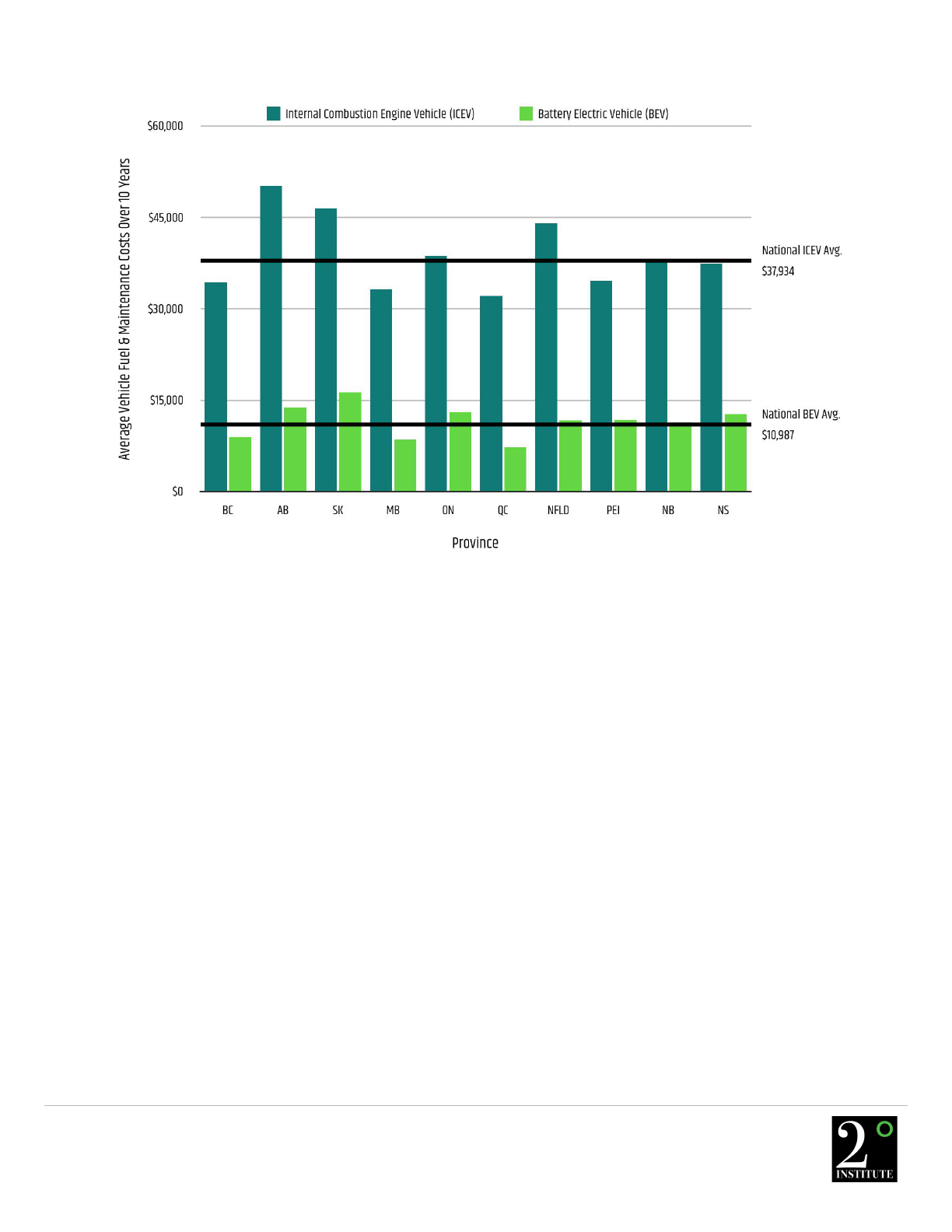
Figure 8: Average 10 year fuel & maintenance costs of ICEVs and BEVs per household.
When comparing fuel and maintenance costs for the estimated vehicle life (250,000km), we divided
250,000km by the average distance driven per year for each province. we used an annual inflation
rate of 2% for the cost of fuel and maintenance for both vehicle types (See Table 10 & 11 in Appendix).
14
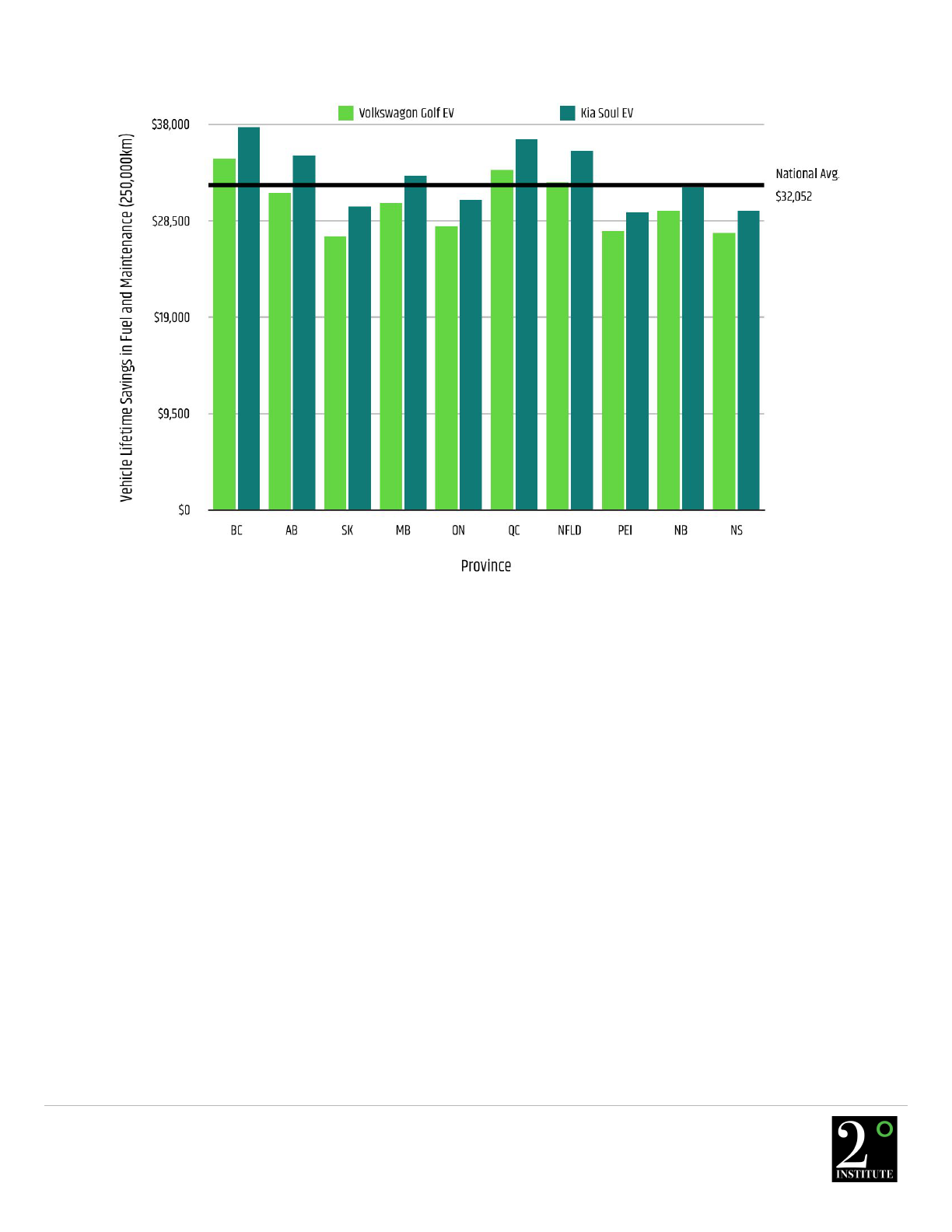
Figure 9: Lifetime Savings in Fuel and Maintenance of the Volkswagen Golf EV & Kia Soul EV
Discussion
The results in Tables 3 and 4 make clear that the considerable reductions in operating expenses
accompanying the choice of a BEV can more than offset its higher initial cost.
Although depreciation and insurance are also significant costs of automobile ownership, we have not
included them in this study because we lack long term data. Although some early BEV models did
suffer high rates of initial depreciation, this was chiefly because rapid improvements in battery
technology have greatly improved the performance of more recent cars. As the field matures and
battery performance plateaus, we can expect that the mechanical depreciation rates of BEVs may
come to match those of ICE cars. Indeed, because EV drivetrains are much simpler in design with
significantly less moving parts as ICE drive trains, it seems likely that most BEVs will depreciate even
more slowly than ICE cars. Of even more relevance, as the effects of global warming become ever more
severe and carbon taxes are raised ever higher, reselling ICE cars may become virtually impossible
while this is unlikely to be true of BEVs.
15

Insurance costs of ICE and BEV cars are now roughly the same. However, as BEVs come to incorporate
ever more sophisticated self-driving features, it is predicted that these will significantly reduce the
BEV accident rate, perhaps leading to a reduction in accident insurance rates.
Conclusion
From a financial perspective, BEVs save Canadian households on average about 71% in fuel and
maintenance costs. Using the four vehicles in our comparison model, this translates into 10 years
household savings ranging from $23,000 to $36,000, or vehicle lifetime savings of $27,000 to $38,000
depending on which province they are used in. These savings should be factored in when comparing
the purchase price of BEVs and ICEVs. Some used BEVs can be found for under $18,000, which
essentially means the car could pay for itself in fuel and maintenance savings.
Aside from financial savings, BEVs
have an important role to play in
transitioning away from fossil
carbon as a fuel source. At a time
when anthropogenic greenhouse
gas emissions are skyrocketing and
climate change is accelerating, the
need to stop our use of fossil-fuels
is becoming increasingly urgent.
Everywhere in Canada, replacing a
gas vehicle with an electric one will
result in a reduction in total
greenhouse gas emissions. This map
(right) shows the life cycle
reduction (for both car and fuel) in
GHG emissions from replacing a
gasoline vehicle with a comparable electric car.
Air quality will improve as more gas vehicles on the road are replaced with electric. According to the
report “Costs of Air Pollution in Canada” by the International Institute for Sustainable Development, air
pollution results in 7,700 premature deaths in Canada each year and in 2015, treating them cost
16

Canadians $36 billion. The transportation sector is one of the largest air pollution sources in Canada
(G.O.C, 2017.)
Although we hope that some will find that this economic analysis helps them to appreciate the cost
advantages of purchasing a BEV, we feel that it is important to point out that, for most of those who
have already purchased BEVs, saving money was not the major goal. Some may have "gone EV" to
reduce their personal GHG contribution as well as eliminating more common air-pollutants such as
ozone, unburned hydrocarbons and nitrogen and sulphur oxides. But probably many more “went
electric” because of the improved driving experience: not just the silence but the instant acceleration.
There was also the increased reliability of the simplified drive train and, in addition, many liked the
fact that they could “fuel-up” at home or drive in HOV lanes without needing a second or third
occupant. Whatever the reason, they were all soon aware that they were part of the wave of the
future. We hope you are able to join them soon.
Recommendations
Electric Vehicles not only cost less to operate than their gas powered equivalents, but they are an
essential tool in reducing greenhouse gas emissions and transitioning away from fossil-fuels. We
need to reduce our carbon footprints as quickly as possible if we are to avert catastrophic climate
change. The 2 Degrees Institute recommends not delaying your transition to the new electrified
transportation era, especially if you live in an area that has an electrical grid powered primarily by
renewable energy.
If you live in an area that still uses a high percentage of fossil-fuels to power the electrical grid (ie:
Alberta and Saskatchewan), installing solar panels on your roof or buying your electricity from green
sources will substantially reduce the carbon footprint of operating your electric vehicle.
17
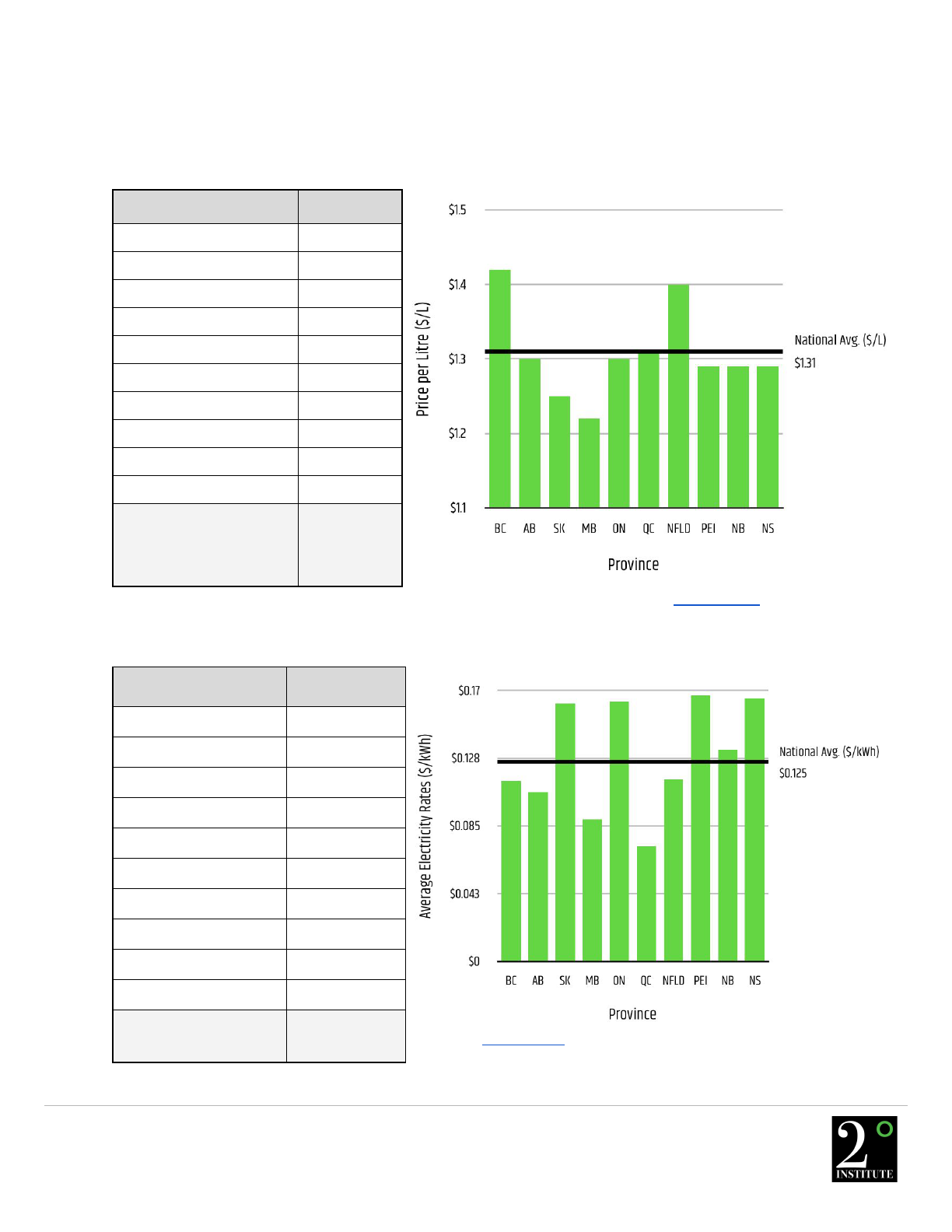
Appendix
Table 5/Figure 10: Average regular unleaded gasoline prices by province (August, 2018).
Province
Price ($/L)
British Columbia
$1.42
Alberta
$1.30
Saskatchewan
$1.25
Manitoba
$1.22
Ontario
$1.30
Quebec
$1.31
Newfoundland
$1.40
PEI
$1.29
New Brunswick
$1.29
Nova Scotia
$1.29
Population-weighted
national average
$1.31
Source: Gasbuddy.com, August, 2018
Table 6/Figure 11: Average provincial electricity rates.
Province
Price ($/kWh)*
Source: Hydro Quebec, 2017 *rates increased by 2% to estimate 2018 prices
British Columbia
$0.113
Alberta
$0.106
Saskatchewan
$0.162
Manitoba
$0.089
Ontario
$0.163
Quebec
$0.072
Newfoundland
$0.114
PEI
$0.167
New Brunswick
$0.133
Nova Scotia
$0.165
Population-weighted
national average
$0.125
18

Table 7: Average fuel economy of vehicles.
ICEVs
BEVs
Type
Class
Curb
weight (kg)
l/100km
Type
Class
Curb
weight (kg)
kWh/100km
2018 Volkswagen Golf
5D hatchback
compact
1,362
8.47
2018 Volkswagen E-Golf
5D hatchback
compact
1,553
17.40
2018 Kia Soul EX 5D
Small
wagon
1,434
8.70
2018 KIA Soul EV 5D
hatchback
Small
wagon
1,491
19.26
Average
1,398
8.59
Average
1,522
18.33
Source: US Department of Energy (fueleconomy.gov)
Table 8: Averaged vehicle and maintenance costs per km by province.
Province
ICEV Costs ($/km)
BEV Costs ($/km)
Savings
per km
Fuel
Maint.
Total
Fuel
Maint.
Total
British Columbia
$0.121
$0.041
$0.163
$0.021
$0.022
$0.043
$0.120
Alberta
$0.111
$0.046
$0.157
$0.019
$0.024
$0.043
$0.114
Saskatchewan
$0.107
$0.043
$0.150
$0.030
$0.023
$0.052
$0.098
Manitoba
$0.105
$0.040
$0.145
$0.016
$0.021
$0.037
$0.107
Ontario
$0.111
$0.041
$0.152
$0.030
$0.022
$0.051
$0.101
Quebec
$0.113
$0.040
$0.153
$0.013
$0.021
$0.035
$0.118
Newfoundland
$0.120
$0.042
$0.162
$0.021
$0.022
$0.043
$0.119
PEI
$0.110
$0.037
$0.148
$0.031
$0.020
$0.050
$0.097
New Brunswick
$0.111
$0.039
$0.149
$0.024
$0.020
$0.045
$0.105
Nova Scotia
$0.110
$0.039
$0.149
$0.030
$0.020
$0.051
$0.098
Population-weighted
national average
$0.113
$0.041
$0.154
$0.023
$0.022
$0.045
$0.109
Source: Vincentric 2018, GasBuddy 2018, Hydro Quebec, 2017 (average of the Kia Soul & VW Golf BEV & ICEV versions.)
Table 9: Percent savings on fuel costs by operating a BEV over an ICEV.
Province
Fuel Savings
Province
Fuel Savings
British Columbia
83%
Quebec
88%
Alberta
83%
Newfoundland
83%
Saskatchewan
72%
PEI
72%
Manitoba
85%
New Brunswick
78%
Ontario
73%
Nova Scotia
73%
Population-weighted National average
80%
19

Table 10: Lifetime costs of fuel & maintenance (average costs of Kia Soul & VW Golf).
Province
ICEV costs*
BEV costs*
Lifetime
Savings*
Fuel
Maint.
Total
Fuel
Maint.
Total
British Columbia
$36,544
$12,446
$48,990
$6,243
$6,544
$12,787
$36,203
Alberta
$32,465
$13,281
$45,746
$5,665
$6,968
$12,632
$33,113
Saskatchewan
$31,101
$12,592
$43,693
$8,643
$6,614
$15,257
$28,436
Manitoba
$30,868
$11,628
$42,496
$4,782
$6,120
$10,903
$31,594
Ontario
$32,310
$11,901
$44,210
$8,680
$6,259
$14,939
$29,272
Quebec
$33,298
$11,978
$45,276
$3,927
$6,301
$10,228
$35,048
Newfoundland
$34,101
$12,035
$46,136
$5,962
$6,325
$12,287
$33,849
PEI
$32,250
$10,888
$43,137
$8,963
$5,740
$14,703
$28,434
New Brunswick
$32,387
$11,316
$43,703
$7,113
$5,960
$13,073
$30,630
Nova Scotia
$31,819
$11,219
$43,038
$8,736
$5,908
$14,644
$28,394
Population-weighted
national average
$33,001
$12,120
$45,120
$6,696
$6,372
$13,068
$32,052
*Estimated 250,000km vehicle lifespans
Table 11: Lifetime costs of fuel & maintenance of the Kia Soul ICEV & EV.
Province
Kia Soul ICEV costs*
Kia Soul BEV costs*
Lifetime
Savings*
Fuel
Maint.
Total
Fuel
Maint.
Total
British Columbia
$37,044
$14,219
$51,263
$6,560
$6,946
$13,507
$37,756
Alberta
$32,909
$15,424
$48,333
$5,953
$7,412
$13,365
$34,968
Saskatchewan
$31,527
$14,501
$46,028
$9,082
$7,028
$16,110
$29,918
Manitoba
$31,291
$13,175
$44,465
$5,025
$6,490
$11,515
$32,950
Ontario
$32,752
$13,575
$46,327
$9,121
$6,642
$15,763
$30,563
Quebec
$33,754
$13,631
$47,384
$4,127
$6,685
$10,812
$36,572
Newfoundland
$34,568
$13,801
$48,369
$6,266
$6,717
$12,982
$35,387
PEI
$32,691
$12,192
$44,883
$9,419
$6,077
$15,496
$29,387
New Brunswick
$32,830
$12,766
$45,597
$7,475
$6,316
$13,791
$31,805
Nova Scotia
$32,255
$12,671
$44,926
$9,180
$6,262
$15,442
$29,484
Population-weighted
national average
$33,452
$13,847
$47,299
$7,036
$6,764
$13,800
$33,499
*Estimated 250,000km vehicle lifespans
20

Table 12: Lifetime costs of fuel & maintenance of the Volkswagen Golf ICEV & EV.
Province
Volkswagen Golf ICEV costs*
Volkswagen Golf BEV costs*
Lifetime
Savings*
Fuel
Maint.
Total
Fuel
Maint.
Total
British Columbia
$36,044
$10,673
$46,717
$5,926
$6,142
$12,067
$34,650
Alberta
$32,021
$11,138
$43,159
$5,377
$6,523
$11,900
$31,258
Saskatchewan
$30,676
$10,683
$41,359
$8,204
$6,200
$14,403
$26,955
Manitoba
$30,446
$10,081
$40,527
$4,539
$5,751
$10,290
$30,237
Ontario
$31,868
$10,227
$42,094
$8,239
$5,875
$14,114
$27,980
Quebec
$32,842
$10,325
$43,167
$3,727
$5,917
$9,645
$33,523
Newfoundland
$33,635
$10,268
$43,903
$5,659
$5,932
$11,592
$32,311
PEI
$31,808
$9,583
$41,392
$8,508
$5,402
$13,910
$27,482
New Brunswick
$31,944
$9,866
$41,810
$6,752
$5,604
$12,355
$29,454
Nova Scotia
$31,384
$9,767
$41,151
$8,292
$5,554
$13,845
$27,305
Population-weighted
national average
$32,549
$10,392
$42,941
$6,355
$5,980
$12,336
$30,605
*Estimated 250,000km vehicle lifespans
21

©2018 2 Degrees Institute
Authors
Ryan Logtenberg
James Pawley
Barry Saxifrage
About the 2 Degrees Institute
The 2 Degrees Institute’s mission is to develop and support strategies that empower people to make
the behavioural and lifestyle changes needed to keep our planet from warming by 2 degrees Celsius
above pre-industrial levels. Find out more about the 2 Degrees Institute by visiting
www.2degreesinstitute.org.
The Electric Pledge is a campaign of the 2 Degrees Institute to accelerate the adoption of zero
emission transportation by encouraging people to take the pledge that their next vehicle purchase
will be an electric one. Find out more at www.electricpledge.org.
This report can be downloaded online at:
http://www.2degreesinstitute.org/reports/comparing_fuel_and_maintenance
costs_of_electric_and_gas_powered_vehicles_in_canada.pdf
22
